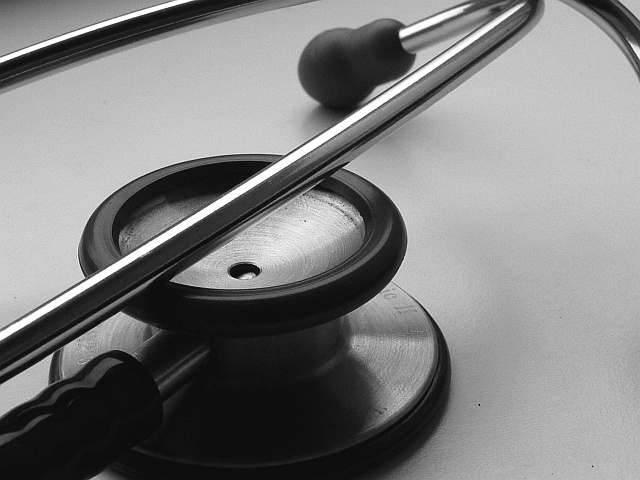You can lead a doctor to disinfection, but how do you get them to clean…or wipe ….or swab a stethoscope?

Public domain image/Darnyi Zsóka
That’s the question raised by a new quality improvement project published in the July issue of the American Journal of Infection Control, the official journal of the Association for Professionals in Infection Control and Epidemiology (APIC).
It is the latest report to find that healthcare providers rarely perform stethoscope hygiene between patient encounters, despite its importance for infection prevention. Infection control guidelines from the Centers for Disease Control and Prevention state that re-usable medical equipment, such as stethoscopes, must undergo disinfection between patients.
“Stethoscopes are used repeatedly throughout the day and become contaminated after each patient exposure, so they must be treated as potential vectors of transmission,” said Linda Greene, RN, MPS, CIC, FAPIC, 2017 president of APIC. “Failing to disinfect stethoscopes could constitute a serious patient safety issue similar to ignoring hand hygiene.”
The report describes a quality improvement pilot project in which the authors observed stethoscope hygiene (alcohol swabs, alcohol gel, or disinfectant wipes) at the start of a four-week rotation for medical students, resident physicians, and attending physicians at a tertiary care academic teaching hospital. The baseline observation of stethoscope hygiene among staff found zero occurrences. The project also looked at hand hygiene, which can include alcohol gel or soap and water.
The team then sought to educate clinicians about the importance of stethoscope hygiene, and emphasized the expectation for clinicians to conduct stethoscope hygiene between each patient encounter. They also hinted that they might monitor during the follow-up phase. Despite this, the result was the same: zero occurrences of stethoscope sanitation.
The authors commented: “While the project had several limitations, it does highlight how rarely stethoscope hygiene is performed. Standard education may not be the answer to this problem. Behavioral and cultural modification to improve hand hygiene still remains a challenge, despite being studied in large randomized trials. Stethoscope hygiene implementation will need more consistent efforts to change culture and habits. We believe that stethoscope hygiene should be included in all hospital hand hygiene initiatives along with increased accountability.”
Hand hygiene has traditionally received much more attention than stethoscope hygiene, but microbiology data show that stethoscope contamination after a single exam is comparable to that of the physician’s dominant hand. Potential pathogens cultured from stethoscopes include Staphylococcus aureus, Pseudomonas aeruginosa, Clostridium difficile, and vancomycin-resistant enterococci. In fact, a recent Swiss study found that stethoscopes were capable of transmitting potentially resistant bacteria, including methicillin-resistant Staphylococcus aureus(MRSA).
Tell me more about NECTAR mattress
The team anticipated a poor result, based on the low rates of stethoscope hygiene that has been reported in studies elsewhere. “We anticipated low stethoscope hygiene rates, but were surprised that no one performed stethoscope hygiene, despite the fact that it is on the checklist for second-year medical students’ final evaluation demonstrating competency in performing a complete history and physical at our institution.”



This is an important and imperative challenge.
Our lives may depend on the habits of healthcare staff in this changing world of bugs.
Having healthcare staff understand and become proactive in preventative actions is a goal.